Understanding Nighttime Hip and Knee Pain
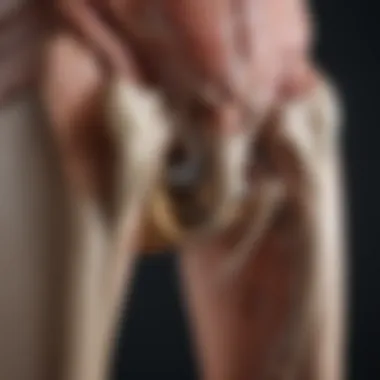
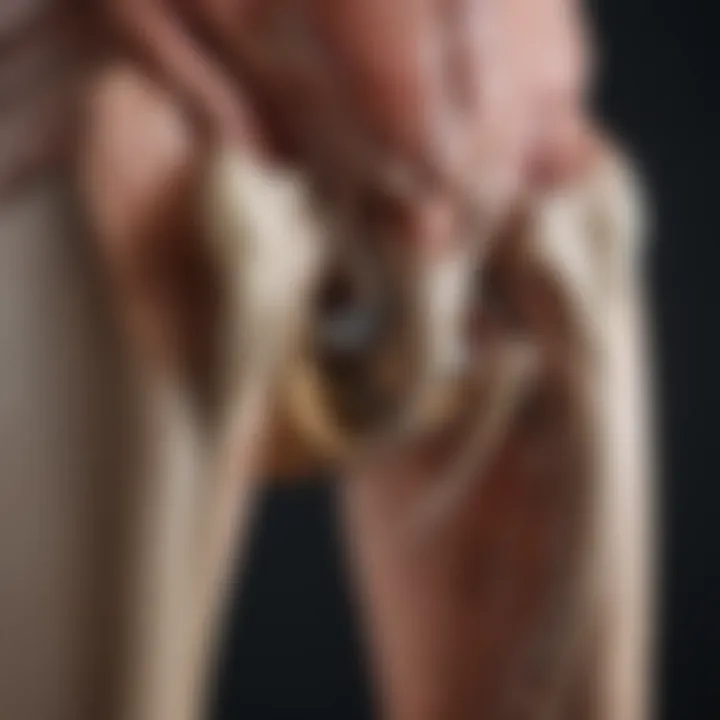
Intro
Experiencing hip and knee joint pain at night can feel like a daunting sentinel of discomfort, often haunting your slumber with unyielding persistence. This is not merely a nuisance; it can significantly disrupt one’s quality of life, making simple tasks feel like scaling a mountain. Understanding the intricate web of causes, symptoms, and management techniques surrounding this phenomenon can help many navigate their nocturnal battles.
Research Context
Background Information
Nighttime hip and knee pain affects a range of individuals, cutting across demographics and lifestyles. Conditions such as osteoarthritis, bursitis, or even muscle strain can contribute to this pain. In fact, joint discomfort might stem from an underlying issue that doesn’t necessarily manifest during daylight hours, creating a perplexing situation for many. Those who may dismiss their discomfort as simply a fact of aging often overlook the importance of addressing these symptoms.
Importance of the Study
By shedding light on the reasons behind nighttime hip and knee pain, this article aims to grant you the tools to understand and combat it effectively. Knowing the nuances of this discomfort can empower individuals, helping them seek the appropriate interventions and treatments tailored to their specific needs. Moreover, recognizing patterns in their pain can lead to profound insights into their respective health.
Understanding Pain Patterns
Pain can have myriad sources and inhabitants. One day it could be due to an old injury rearing its head; the next, it could be related to a particular activity performed during the day, or even something as simple as sleeping position.
- Old Injuries: Past traumas, especially if not fully healed, can exacerbate joint pain at night.
- Daily Activities: Overexertion or improper techniques while exerting oneself can also lead to increased discomfort.
- Sleep Position: How you cradle your legs and hips can play a huge role in the comfort level of your joints.
"Pain isn't just a symptom; it’s a signal. Listening to it is the first step toward understanding."
Symptoms to Watch
Pain can come in a variety of shapes and sizes, much like a chameleon. Here are common symptoms to pay attention to:
- Aching and Stiffness: Often noticeable after prolonged periods of inactivity, like sleeping.
- Swelling and Tenderness: Swelling may be indicative of an underlying condition such as arthritis.
- Limited Range of Motion: You might find it hard to move your joint freely, especially in the morning.
Discussion
Exploring these sources and symptoms leads to the crux of understanding and management. Identifying what triggers these discomforts can guide us toward appropriate methods of relief.
Interpretation of Results
Decoding the relationship between lifestyle factors and joint pain at night is complex. Factors like physical activity, weight management, and even stress management can have lasting impacts on how one experiences pain. Whether it’s through increased inflammation or simply the strain of daily activities, a clear pattern emerges: pain is often a message from your body asking for a rethink of your routine.
Comparison with Previous Research
While the study of nighttime joint pain is still evolving, past research has shown a clear correlation between joint stiffness and poor sleep quality. Various studies have pointed out that those with chronic pain conditions often report more severe discomfort at night compared to their daytime experiences. This insight underscores the importance of addressing joint issues proactively, instead of waiting for pain levels to reach unbearable heights.
In summary, understanding hip and knee joint pain at night is a multifaceted area that invites exploration from various angles. From investigating underlying health conditions to acknowledging individual lifestyle habits, it can equip individuals not just with knowledge but with actionable strategies to tackle their pain effectively.
Prelude to Hip and Knee Joint Pain
Understanding hip and knee joint pain is a critical aspect of addressing the discomfort many experience, particularly at night. Nighttime joint pain isn’t just an inconvenience. It can deeply affect sleep quality and overall well-being. A comprehensive grasp of its causes, symptoms, and management allows individuals to take informed steps towards seeking relief. This discussion will not only shed light on the complexities surrounding these pains but also equip the reader with practical insights vital for navigating their health.
Defining Joint Pain
Joint pain is often a composite of various sensations, which can range from sharp and sudden to a dull ache creeping in like an unwelcome guest. At its core, joint pain, especially in the hips and knees, stems from irritation or inflammation of bodily structures. Many conditions could be the culprit, including osteoarthritis, rheumatoid arthritis, and even injuries sustained long ago. When defining joint pain, it’s crucial to recognize that each individual's experience can be tailored by their unique health background and lifestyle factors.
Prevalence and Impact
The prevalence of hip and knee joint pain, particularly at night, affects millions worldwide. Recent studies suggest that nearly one in four adults experience joint pain that disrupts their sleep. This is a staggering figure that highlights the significance of the issue.
- Risk Factors: Obesity, age, and previous injuries can all up the stakes on this unfortunate condition.
- Impact on Quality of Life: Individuals suffering from nighttime pain often report a notable decline in their overall quality of life, compounded by fatigue and mood disturbances.
Understanding the prevalence underscores the pressing need for effective strategies to manage pain, prevent further damage, and potentially improve sleep quality.
Causes of Hip and Knee Joint Pain at Night
Nighttime hip and knee joint pain is both a vexatious and debilitating experience for many individuals. Understanding the various causes is crucial for effective management and treatment. Each cause can harbor specific characteristics that lead to unique pain patterns and symptoms, thus knowing these can offer pathways to relief. Identifying underlying factors also plays a significant role in developing personalized strategies for coping. Recognizing these causes will not only help in the healing process but can also moderate any fears about the unknown aspects of joint pain.
Arthritis: A Major Contributor
Types of Arthritis
Arthritis fundamentally encompasses a variety of joint disorders, characterized primarily by inflammation. There are several types of arthritis that hold particular relevance to hip and knee pain, among them osteoarthritis and rheumatoid arthritis. Osteoarthritis often comes about due to wear and tear on the joints over time, while rheumatoid arthritis is an autoimmune condition that leads the body's immune system to attack joint tissues. These two types can significantly affect comfort levels during the night, leading to pronounced pain.
- Osteoarthritis commonly presents as a degenerative condition, where the cartilage cushioning bones gradually breaks down. This results in bones rubbing together, causing stiffness and pain that often peaks at night.
- Rheumatoid arthritis may appear with swelling, warmth, and tenderness in the affected joints, usually followed by pain that intensifies at rest, often felt more acutely overnight.
Symptoms and Diagnosis
Recognizing symptoms associated with arthritis is essential for timely diagnosis and intervention. Key characteristics include joint pain, swelling, stiffness, or reduced range of motion. Notably, some people experience early morning stiffness that can last for hours. The diagnostic process usually entails a combination of presenting clinical symptoms and imaging studies.
- X-rays are vital in assessing any cartilage loss, while blood tests can provide insights into inflammatory markers that signal rheumatoid arthritis.
- Diagnosis sometimes involves patient-reported symptom questionnaires which can bring clarity to the severity and impact of pain on quality of life. This facet can be particularly useful for the healthcare professional to pinpoint a tailored approach to treatment.
Bursitis and Tendinitis
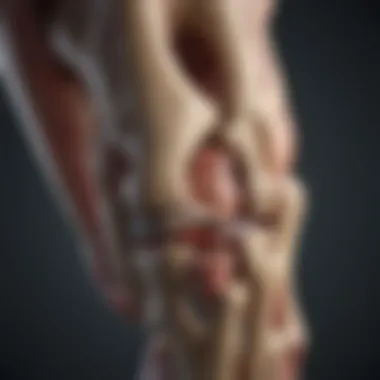
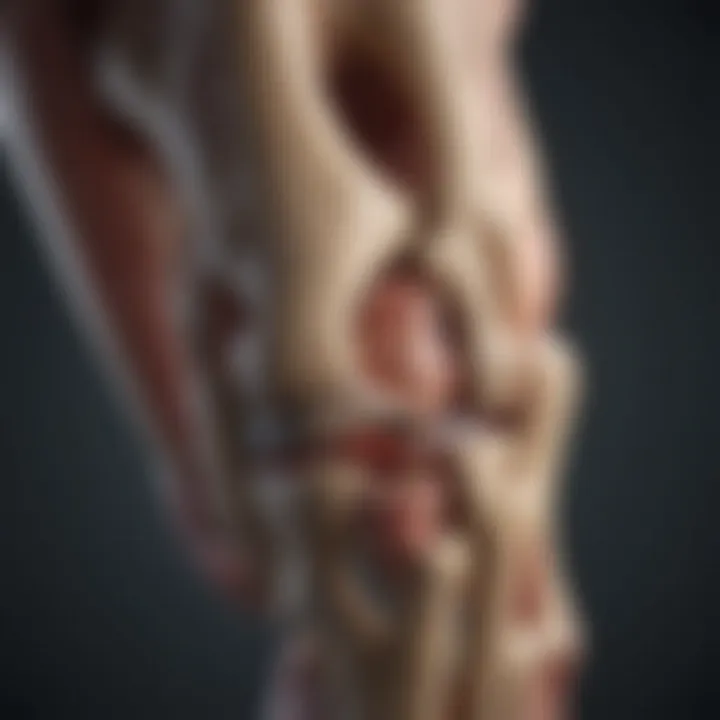
Understanding Bursitis
Bursitis arises when the bursae, small sacs of fluid that cushion your joints, become inflamed. This condition frequently develops in areas subjected to repetitive movement or excessive pressure, like knees and hips. The important thing to understand is that this condition can escalate at night due to a change in posture when resting.
- At night, the body’s natural healing processes are at play, which can sometimes lead to more noticeable pain if bursitis is present.
- Symptoms can include localized pain, swelling, and limited mobility. Once again, specificity in these symptoms can aid in effective diagnosis, generally confirmed through physical examination and sometimes imaging.
Tendinitis Overview
Tendinitis, on the other hand, refers to the inflammation of tendons, often resulting from overuse. This can lead to pain during the day but worsen during nighttime, primarily because of stillness and inactivity.
- Excruciating pain can arise from certain positions during sleep, causing the sufferer to frequently shift and disrupt restorative sleep patterns.
- Diagnosing tendinitis often involves obtaining a thorough history of activities that may have led to the condition, along with physical assessments that reveal tender points along the tendons.
Injuries and Trauma
Past Injuries and Recurrent Pain
Many individuals may be unaware that past injuries, even those seemingly healed, can lead to recurrent pain. When joint injuries occur, even trivial ones, the healing process can sometimes lead to scar tissue. This scar tissue can restrict movement and may not manifest until later, particularly when at rest.
- It is important to remember that past trauma is a key player in persistent nighttime pain.
- Consultations for individuals who have suffered previous injuries can help identify this lingering influence and design a treatment plan that addresses both past trauma and ongoing symptoms.
Chronic Pain Development
Chronic pain can often arise when the body continues to experience pain long after an injury should have healed. This refers to a complex condition that can emerge due to prolonged inflammation and sensitivity in the nervous system. Nighttime can highlight this type of chronic experience, as quiet moments breed more noticeable sensations.
- Factors such as lack of mobility, posture during sleep, and individual pain thresholds often contribute to this scenario.
- Assessing chronic pain requires multidisciplinary approaches, and sometimes it involves therapeutic adaptations designed explicitly for nighttime comfort and better sleep quality.
Lifestyle Factors
Obesity and Joint Stress
Excess weight can put significant strain on the hips and knees, amplifying discomfort. The impact of being overweight is twofold: not only does it put more stress directly on the joints, but it can also lead to inflammatory responses that can worsen joint conditions.
- The correlation between obesity and joint pain is widely recognized and can serve as motivation for individuals aiming for weight management as a component of their pain management strategy.
- Addressing weight concerns often necessitates a combination of dietary adjustments and physical activity, which can alleviate joint stress and promote overall wellness.
Activity Level Considerations
Conversely, a sedentary lifestyle can also lead to joint pain. Muscles support joints, and if they are not kept active, this can result in weakness and, subsequently, joint pain, particularly at night.
- Individuals need to balance activity levels to maintain muscle strength while avoiding overexertion that could worsen conditions like tendinitis or bursitis.
- Tailoring exercise routines that emphasize joint support and flexibility can serve the dual purpose of reducing nighttime pain while enhancing overall joint health.
Understanding these causes helps frame joint pain experiences in a more comprehensive manner, providing both individuals and healthcare providers with the tools necessary for effective intervention and management. Ignoring these fundamental aspects can lead to an incomplete picture and ineffective pain management strategies.
Symptoms Associated with Nighttime Joint Pain
Understanding the symptoms associated with hip and knee joint pain at night is critical for both diagnosis and effective management. Nighttime pain can significantly disrupt sleep and overall quality of life. Knowing what to expect regarding symptoms helps individuals pinpoint when to seek medical help, and elicits proactive strategies for managing discomfort. This segment dives into the variability of symptoms and how recognizing patterns can lead to better management of joint health.
Understanding Symptom Variability
Intensity and Duration
The intensity and duration of hip and knee pain at night can vary widely between individuals. For some, the pain may be a dull ache that creeps in as the day winds down. Others might experience sharp, debilitating pain that lasts through the night. This variability is a significant aspect to consider when assessing the impacts on sleep and day-to-day activities.
Key characteristics of intensity include how severe the pain feels and how long it lingers. A sudden burst of intense pain can be a warning sign of an underlying issue that requires immediate attention. On the flip side, persistent dull pain often suggests chronic conditions that can be managed with long-term strategies. Recognizing these differences in intensity and duration helps frame a suitable treatment plan, as they reflect the underlying cause of pain.
Disadvantages of ignoring this variability may include worsening conditions and escalating symptoms. For instance, if an individual does not take note of how intensity fluctuates over time, they might overlook essential changes that necessitate further evaluation or adjustment of treatment protocols.
Aggravating Factors
Aggravating factors play an essential role in the symptom experience of nighttime joint pain. Factors such as sleeping positions, physical activity during the day, and even stress levels can influence the severity of pain at night. Understanding what exacerbates the pain not only aids in finding relief but also empowers individuals to adapt their habits for better joint health.
For instance, many find that sleeping on their side can create added pressure on the hip or knee, intensifying the pain. Adjusting sleeping positions may alleviate some discomfort, representing a practical self-management strategy. Other aggravating factors, such as high-impact activities during the day, might lead to inflammation that flares up when lying down.
The unique feature of identifying these factors is that it tailors the pain management process. Acknowledging what makes joint pain worse allows individuals to potentially avoid these triggers, leading to less pain at night. Ignoring these factors, however, can further complicate coping strategies, resulting in a cycle of discomfort.
Identifying Pain Patterns
Unilateral vs. Bilateral Pain
Another fascinating aspect of nighttime joint pain is whether the discomfort presents unilaterally (on one side) or bilaterally (on both sides). This distinction can provide crucial clues about the underlying condition causing pain. Unilateral pain might indicate localized issues, such as a previous injury or specific arthritis types affecting just one joint. On the other hand, bilateral pain could signify systemic conditions like rheumatoid arthritis or osteoarthritis, which often affects joints on both sides equally.
The benefit of identifying whether pain is unilateral or bilateral lies in guiding diagnosis and treatment options. When doctors understand these patterns, they can tailor interventions accordingly - whether that means focusing on rehabilitation for one joint or considering systemic treatments that address wider inflammation.
However, relying solely on pain patterns without comprehensive evaluation can lead to misdiagnosis. Hence, individuals should ensure thorough discussions with healthcare professionals to harness this information effectively.
Temporal Patterns
Finally, considering temporal patterns of pain is paramount. This aspect asks questions like, does the pain worsen at specific hours? Does it wake the person from sleep? Understanding when pain is prevalent can point to its origin and inform management approaches. For example, if pain tends to kick in after several hours of lying down, it might indicate specific joint pressure or require adjustments to sleeping positions or mattress quality.
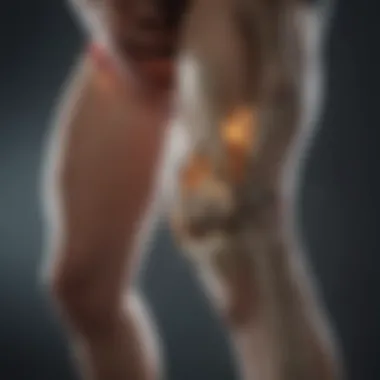
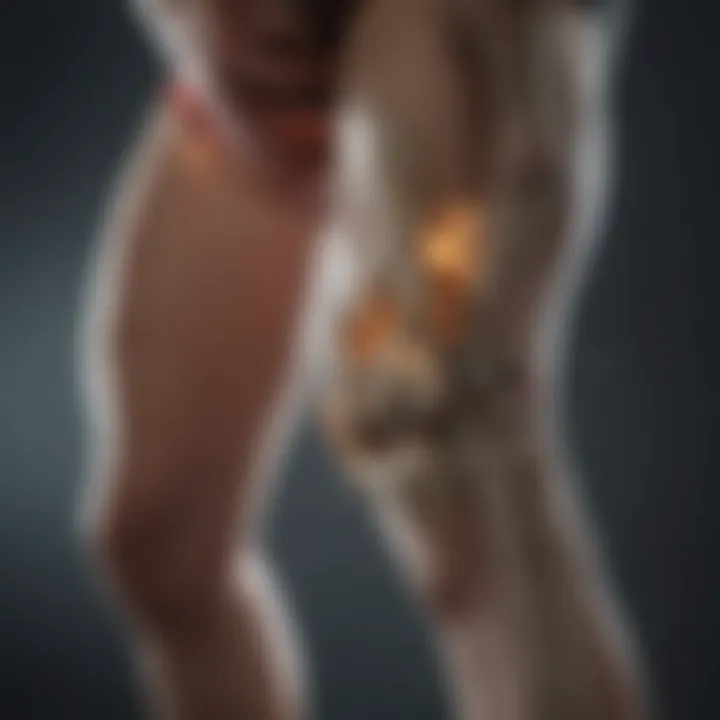
Temporal patterns add depth to symptom tracking, enriching understanding over time. It is a key factor that can lead to a more dynamic response from both patients and healthcare providers. Addressing this knowledge allows for adjustments in lifestyle or treatment methods, which in turn can result in significant improvement in overall management of joint health. Ignoring these patterns may overlook crucial adjustments that could enhance the quality of life.
"Understanding the symptoms and their specific variations can lead to more tailored and effective management strategies for those suffering from hip and knee joint pain at night."
Recognizing the signs and variations of joint pain at night leads to more informed decisions regarding treatment and self-care, ultimately improving outcomes for sufferers.
Diagnosis of Hip and Knee Joint Pain
Diagnosing hip and knee joint pain, particularly when it’s lurking at night, is paramount for effective management. Identifying the root cause can dictate the approach to treatment. It also allows patients to prioritize their health by understanding pain triggers and patterns. The process not only requires clinical expertise but also patient cooperation, focusing on both subjective experiences and objective findings.
Clinical Evaluation Techniques
Patient History Review
The Patient History Review is often the first step in evaluating joint pain. A thorough recount of the patient's medical background, including previous injuries, surgeries, and existing health conditions, provides key insights. This step is beneficial because it narrows down potential culprits of the pain, thus streamlining the diagnostic process.
Notably, the key characteristic of this review is its emphasis on contextual information. For instance, understanding whether pain worsens after specific activities can point to underlying issues such as arthritis or tendinitis. This step is popular among clinicians as it fosters a personalized assessment of the pain rather than a one-size-fits-all approach.
One unique feature of this review is its focus on patient-driven details. This can be advantageous as it encourages patients to articulate their discomfort and symptoms in their own words. However, it may also bring some disadvantages, such as potential bias or inaccuracies in self-reported data, which must be navigated delicately by healthcare providers.
Physical Examination Details
The Physical Examination serves as an integral component in diagnosing joint pain. It involves a comprehensive assessment of joint mobility, strength, and tenderness. The primary key characteristic of this examination is its hands-on nature, allowing healthcare professionals to make real-time observations. This is beneficial as it can often elicit immediate feedback regarding joint function and stability.
One notable unique feature of physical examinations is the assessment of gait and posture. These aspects provide insights into how the pain might be affecting daily activities. While this method is broadly recognized for its effectiveness, it does have its limitations; for example, some patients might be unable to perform certain movements due to fear of exacerbating their pain, leading to inconclusive results.
Imaging and Diagnostic Tests
X-rays and MRIs
X-rays and MRIs play significant roles in the diagnostic process. X-rays provide a quick glimpse at bone alignment and assess for fractures or degeneration. In contrast, MRIs offer a detailed look at soft tissues—ligaments, cartilage, and muscles. The benefit of using these imaging technologies lies in their ability to provide a clear picture of abnormalities that might not be discernible through physical examination alone.
The unique feature of X-rays is their speed; results can often be obtained quickly, facilitating faster decision-making. However, disadvantages of X-rays include their inability to detect soft tissue damage adequately. On the other hand, while MRIs are comprehensive, they are also time-consuming and expensive, which might pose access issues for some patients.
Blood Tests and Their Relevance
Blood tests offer a supportive role in the diagnosis of joint pain. They can check for markers of inflammation, such as elevated C-reactive protein, or identify autoimmune diseases like rheumatoid arthritis. The key characteristic of blood tests is their ability to provide quantifiable data, which complements other diagnostic methods well.
What makes blood tests particularly beneficial is their relatively low risk and non-invasive nature. A unique advantage is that they can detect conditions before significant physical damage occurs, fostering early intervention. However, the disadvantage is that not all joint pain has a demonstrable abnormality in blood tests, which means that some patients might still face uncertainty in the face of negative results.
A comprehensive diagnosis of hip and knee pain at night requires careful synthesis of patient history, physical findings, and appropriate imaging and laboratory tests. Each component contributes uniquely to a clearer understanding of the challenges faced by patients.
Management Strategies for Nighttime Joint Pain
Addressing nighttime joint pain effectively is crucial for improving sleep quality and overall quality of life. The discomfort from hip and knee pain can not only disrupt sleep but also lead to chronic fatigue and mood disturbances. Thus, focusing on management strategies becomes essential. By examining pharmaceutical options, physical therapies, alternative methods, and self-care techniques, individuals can tailor their pain management plan to find what best suits their needs. Each of these methods bears its own benefits and considerations that play a significant role in managing and alleviating pain.
Pharmaceutical Interventions
Over-the-Counter Options
When it comes to a quick relief for joint pain, over-the-counter (OTC) medications are often the first line of defense. These can work wonders for some individuals struggling to find comfort at night. Common options include nonsteroidal anti-inflammatory drugs (NSAIDs) like ibuprofen and naproxen. The great thing about these OTC medications is that they are easily accessible, allowing individuals to manage mild to moderate pain without a prescription.
One unique feature of these medications is their anti-inflammatory properties, which help reduce swelling and improve the range of motion. They tend to be favored choices because they can provide relief relatively quickly. However, it's worth noting that you should use them judiciously; long-term use can lead to gastrointestinal issues and other side effects.
Prescription Medications
For those with more severe or chronic pain, prescription medications may be necessary. These can include stronger NSAIDs or even medications like corticosteroids, which are often used to reduce inflammation directly. A key characteristic of prescription options is their potency relative to OTC choices, making them suitable for those who do not find relief from standard medications.
Moreover, prescription medications can be tailored to individual health needs, often adjusting dosages to effectively manage pain. However, this unique feature can also present disadvantages; they may come with a higher risk of side effects and typically require careful monitoring by a healthcare professional. Therefore, it is crucial to have open discussions with a doctor about the best approaches for pain relief.
Physical Therapies
Importance of Rehabilitation
Physical therapy plays an integral role in long-term pain management. Understanding the importance of rehabilitation helps individuals not only manage their pain better but also restore function and mobility. A structured rehabilitation program can significantly improve strength, flexibility, and overall joint health.
The uniqueness of this approach lies in its combination of exercises tailored specifically to the affected joints. These programs often emphasize guided movements that can prevent compensatory habits which may increase discomfort. Instead of relying solely on medications, incorporating physical therapy offers a proactive strategy for managing pain, although it demands commitment and consistency.
Evidence-Based Approaches
Utilizing evidence-based approaches in physical therapy means relying on methodologies that have been scientifically validated. These could include modalities like ultrasound therapy, electrical stimulation, and structured exercise regimens shown to yield positive results. Staying updated with the latest research helps healthcare providers tailor treatments that truly work for their patients.
The key advantage here is that patients get access to treatments that are proven effective, improving the overall impact of therapy on pain management. However, it’s important to remember that individual responses can vary, meaning what works for one person may not yield results for another.
Alternative and Complementary Methods
Acupuncture and Its Benefits


One intriguing avenue for pain management is acupuncture, a method that has gained recognition beyond traditional circles. Its primary appeal rests on its ability to trigger the body’s own pain-relieving mechanisms, providing a form of relief that doesn’t rely on medications. Many individuals find value in the calm and focused atmosphere during sessions, which can help mitigate anxiety related to chronic pain.
The distinctive nature of acupuncture lies in its holistic approach, as it can simultaneously address multiple aspects of health and well-being, rather than focusing solely on the pain's physical manifestation. However, results can be quite individual, with some experiencing significant relief while others may not find it as effective.
Mindfulness and Pain Perception
An often overlooked strategy in managing pain is mindfulness, which can greatly alter the way one experiences discomfort. Techniques such as meditation and focused breathing help patients develop a different relationship with pain, enabling them to cope better during flare-ups. This method emphasizes mental fortitude and can lead to improved overall mental well-being.
The beauty of mindfulness is that it's a skill that can be developed and practiced anywhere, making it a highly accessible option. Still, it's not a one-size-fits-all solution; some may find it challenging to implement consistently amidst pain.
Self-Care Techniques
Effective Sleep Positions
To combat nighttime discomfort, adopting effective sleep positions can be a game changer. Certain positions can alleviate pressure on the hips and knees, allowing for a more restful night. For instance, placing a pillow between the knees or using a body pillow to support the legs may reduce strain and improve alignment.
This approach stands out because it empowers individuals to proactively manage their pain through lifestyle adjustments rather than solely relying on medications. On the downside, it might take some experimentation to find what truly works best for each person, as preferences and pain types vary across individuals.
Home Remedies for Relief
The charm of home remedies for joint pain lies in their ease of use and accessibility. Options like warm baths, topical creams, and gentle stretching can all bring about a sense of relief. These methods often incorporate natural ingredients known for their soothing properties, making them popular among those seeking alternatives to pharmaceuticals.
The good aspect of home remedies is that they often complement other treatment strategies effectively. However, some may find that they do not provide the same level of relief as more structured medical interventions, and managing expectations is vital.
Managing nighttime joint pain is, therefore, a multi-faceted endeavor. By combining pharmaceutical interventions, physical therapies, alternative approaches, and self-care techniques, it is possible to create a comprehensive strategy tailored to individual needs.
Remember, always consult with healthcare professionals to determine the best course of action suitable for your specific situation.
Long-Term Considerations
The long-term management of hip and knee joint pain is critical, not just to provide immediate relief but to foster an overall better quality of life. Nighttime discomfort with these joints, often brushed off as age-related wear and tear, can indicate underlying conditions that need addressing. Establishing a long-term strategy in managing these pains can help prevent further deterioration of the joint and potentially stave off surgical interventions.
Monitoring Pain Progression
Regularly monitoring pain progression is a vital step in understanding how your joint pain evolves over time.
Recognizing Warning Signs
Recognizing warning signs is comme a compass guiding individuals through the murky waters of joint pain. Early detection of changing symptoms can lead to better management outcomes. Key characteristics to look for include changes in pain intensity, sharpness of discomfort, or shifts in how long the pain lasts. These markers are beneficial because the sooner someone knows that their situation is changing, the more proactive they can be in seeking help. Ignoring such signs can lead to a further decline in joint health, making it harder to treat later on.
The unique feature of recognizing warning signs lies in its simplicity – often requiring just a bit of mindfulness about one's own body. By keeping track of these signs, individuals may avoid a more serious situation, reducing the risk of complications down the line.
When to Seek Further Help
Knowing when to seek further help is just as important as recognizing the warning signs. This aspect emphasizes the necessity for clear communication with healthcare providers about growing concerns. Symptoms that warrant a doctor's visit include persistent pain that disrupts daily activities, swelling, or anything else that feels out of the ordinary. This knowledge is critical as it empowers individuals to take charge of their health.
The unique feature here is that it's about taking timely action. The sooner someone consults a professional, the better the chances are for effective treatment options. However, waiting too long could close off certain interventions, leading to more invasive treatments down the line.
Preventive Measures
Adopting preventive measures is key to maintaining healthy joints over the long haul.
Exercise and Joint Health
Exercise plays a significant role in joint health, especially concerning mobility and strength. Regular, low-impact exercises such as swimming or cycling can help keep joints flexible. The key characteristic of this approach is that it not only strengthens the muscles around the joints but also improves overall bone health. This makes exercise a popular choice among healthcare providers.
Its unique feature rests in the fact that it’s not required to engage in high-intensity workouts; moderate activities can yield significant benefits. Overdoing it, however, can lead to aggravation of existing pain, thus reinforcing the need for caution.
Nutritional Considerations
Nutritional considerations are equally important as diet has a direct impact on joint health. Foods rich in Omega-3 fatty acids, antioxidants, and vitamins can be beneficial. A balanced diet contributes to lower inflammation levels, potentially alleviating pain.
The key characteristic of focusing on nutrition is that what we eat can either worsen or help manage pain. It’s a popular choice because dietary changes are often more feasible for someone than adhering to an extensive exercise regimen. The unique feature of nutritional adjustments is their ability to integrate seamlessly into daily life. However, one must be cautious of fad diets that may not provide balanced nutrition, leading to deficiencies that could further complicate joint health.
End
The topic of hip and knee joint pain at night holds significant relevance in the lives of many individuals. This article has sought to unravel the complexities surrounding this condition, focusing on a variety of factors that can contribute to discomfort during the nocturnal hours. By understanding the root causes and identifying the symptoms that accompany nighttime pain, individuals can better manage their situation and seek appropriate care.
Summarizing Key Points
In summary, several critical aspects deserve attention:
- Causes of Pain: Nighttime hip and knee pain can stem from multiple entities, including various types of arthritis, bursitis, and past injuries. Recognizing these causes is the first step toward effective management.
- Symptoms: Understanding how pain differs in intensity and pattern, whether unilateral or bilateral, is essential. This knowledge aids in diagnosing and developing treatment plans.
- Diagnosis and Management: Comprehensive evaluation techniques, including imaging and clinical assessments, are vital. Management strategies vary but can encompass pharmaceutical interventions, physical therapy, and self-care methods. Each plays its part in alleviating discomfort and improving sleep quality.
By grasping these points, individuals can not only navigate their existing conditions but also take proactive steps toward improved joint health.
Future Directions in Research
The exploration of hip and knee joint pain is constantly evolving. Future research could delve into the following areas:
- Advanced Imaging Techniques: New technologies might not only enhance diagnostic accuracy but also help in understanding joint degeneration at earlier stages.
- Biological Markers: Identifying specific biological markers for nighttime pain can lead to more personalized management strategies and improved outcomes.
- Impact of Lifestyle Changes: A clearer understanding of how dietary adjustments and physical activity affect nocturnal pain may pave the way for effective interventions.
Ultimately, continued investigation into these areas holds the potential to transform our understanding and management of nighttime joint pain, making life a little easier for those who suffer from it.















